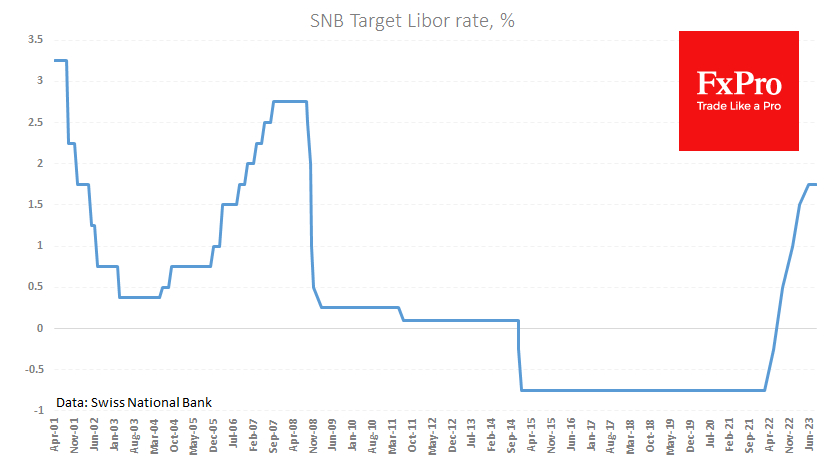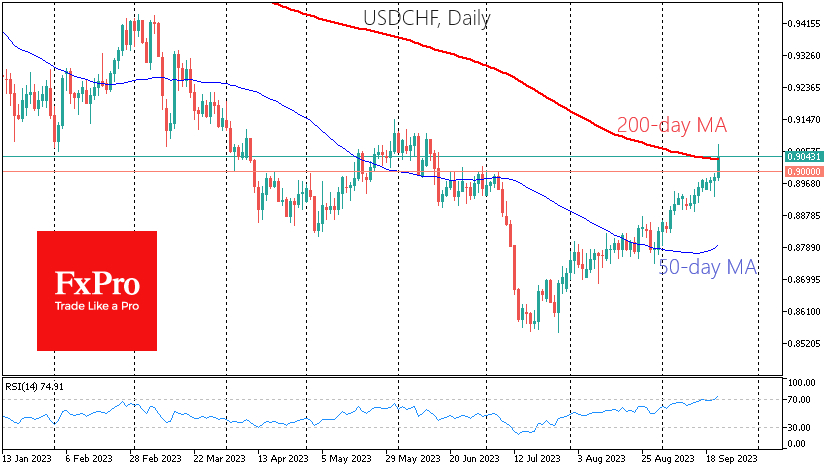The Swiss National Bank left its key interest rate unchanged at 1.75%. On average, markets had been predicting a 25-basis point hike, contrary to our expectations.
Most likely, market participants' forecasts were influenced by the ECB rate hike a week earlier. In addition, policy tightening expected in Sweden and Norway indeed took place. But there are a couple of things that set Switzerland apart from other European countries.
First is inflation. The annual rate of price increases has been below 2% for the past three months, and this is not a high-base effect. Monthly price increases have averaged 0.09% over the past six months and half that over the past three months, bringing annual inflation to 1.1% and 0.55%, respectively.
Second is the Swiss franc exchange rate. In July, the USD/CHF fell to 0.8550. It was briefly lower in 2015 and from May to September 2011. By comparison, the yen - another example of a safe haven - is testing multi-month lows. Neither the euro nor the pound can boast high levels relative to historical prospects.
The Swiss franc lost 1.5% against the dollar in response to the Fed's hawkish pause and a "surprise" from the SNB. The USDCHF pair has risen above 0.9050, its highest level in over three months, after moving slowly but smoothly upwards for the past two months.
If the pair holds these levels for the rest of the day, or even better, for the rest of the week, we will have signalled a change in the long-term trend, as the USDCHF has crossed the 200-day moving average.
However, we should expect a severe fight at current levels as the pair looks overbought. The pair's upward momentum on Thursday could be the last mile before broad profit-taking begins on the previous gains.
The Franc has likely run out of fuel for further declines. A corrective pullback to 0.9850-0.9000 may be needed to make selling the Franc attractive again in the medium term. On the bearish side, risk aversion in global markets could return in the coming days if it leads to deleveraging.
The FxPro Analyst Team




